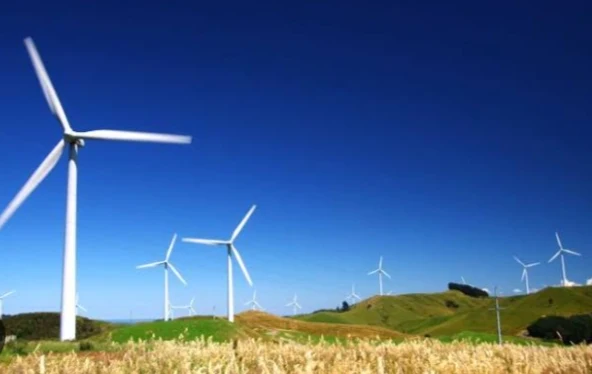Harnessing the Wind: A Deep Dive into the Diverse Landscape of Wind Farms in India
Introduction:
As India strides towards clean energy independence, wind farms across the country are playing a crucial role.
This article delves into the intricate world of Indian wind power, exploring its significance, current state, future potential, and the intricate interplay of statistics, factors, and challenges that shape its landscape.
Galloping Towards Green Energy:
Wind power has established itself as a leading renewable energy source in India, witnessing meteoric growth in recent years. Driven by government initiatives, technological advancements, and cost reductions, the installed wind power capacity skyrocketed to over 41.6 GW (GigaWatts) as of December 2023. This translates to roughly 159 GW generated by wind farms over the year, significantly contributing to India's clean energy ambitions.
Painting a Statistical Picture:
Table 1: Key Wind Farm Statistics in India (as of December 2023)
| Metric | Value | Source |
|---|---|---|
| Installed Capacity | 41.6 GW | Ministry of New and Renewable Energy (MNRE) |
| Annual Electricity Generation | 159 GWh | MNRE |
| Number of Wind Turbines | Approximately 38,000 | MNRE |
| Top Wind Farm States | Tamil Nadu (7.6 GW), Maharashtra (5.3 GW), Rajasthan (4.2 GW) | MNRE |
| Largest Wind Farm | Muppandal Wind Farm (Tamil Nadu), 1.5 GW | BYJU'S |
| Capacity Utilization Factor | 23.1% (FY 2021-22) | Central Electricity Authority (CEA) |
A Geographical Tapestry of Wind Power
India's diverse landscape offers a treasure trove of wind energy potential. States like:
- Tamil Nadu: Home to the largest wind farm (Muppandal) and boasting an impressive 7.6 GW capacity, Tamil Nadu is the undisputed wind leader.
- Maharashtra: With 5.3 GW of installed capacity, Maharashtra harnesses strong wind regimes, particularly in the Western Ghats and Satara district.
- Rajasthan: The Thar Desert's windswept plains make Rajasthan a wind energy powerhouse, contributing 4.2 GW to the national grid.
- Gujarat: With a coastline ideal for offshore wind farms and 3.1 GW of onshore capacity, Gujarat holds immense potential for future development.
- Karnataka: Known for its hilly terrain and strong wind speeds, Karnataka has installed 2.5 GW of wind power capacity.
These states, along with Andhra Pradesh, Madhya Pradesh, and Telangana, collectively contribute over 75% of India's total installed wind power capacity.
Technological Evolution:
Wind turbine technology in India has undergone a remarkable transformation. Smaller turbines with capacities of 250 kW have given way to larger, more efficient ones in the 2-3 MW range. This shift has not only boosted power generation but also reduced the cost of electricity produced from wind. Leading Indian manufacturers like Suzlon and GE Renewable Energy are at the forefront of this technological advancement.
Economic and Social Impact:
Beyond clean energy generation, wind farms bring a multitude of benefits:
- Job creation: The Indian wind sector directly and indirectly employs over 100,000 people, driving rural development and economic growth.
- Infrastructure development: Investments in wind farms improve roads, communication networks, and grid infrastructure in remote areas.
- Community engagement: Collaborative models involving local communities in wind farm development promote social upliftment and ensure sustainability.
Challenges and the Path Forward:
Despite the progress, several challenges impede wind power's full potential:
- Land acquisition: Complexities in acquiring land for wind farm projects often delay development.
- Grid connectivity: Inadequate grid infrastructure in remote areas creates challenges in transmitting generated electricity.
- Transmission bottlenecks: Strengthening and expanding the transmission network is crucial to accommodate future wind power growth.
- Financial constraints: Securing financing for wind projects remains a challenge, requiring innovative solutions.
- Fluctuating wind speeds: Addressing intermittency issues through energy storage, forecasting, and grid flexibility is essential.
Conclusion:
With commitment to overcoming challenges, wind farms hold immense potential to be a cornerstone of India's clean energy future. By leveraging technological advancements, addressing grid and land acquisition issues, and fostering community engagement, India can unlock the full potential of its wind resources and create a sustainable and secure energy future for its citizens.


